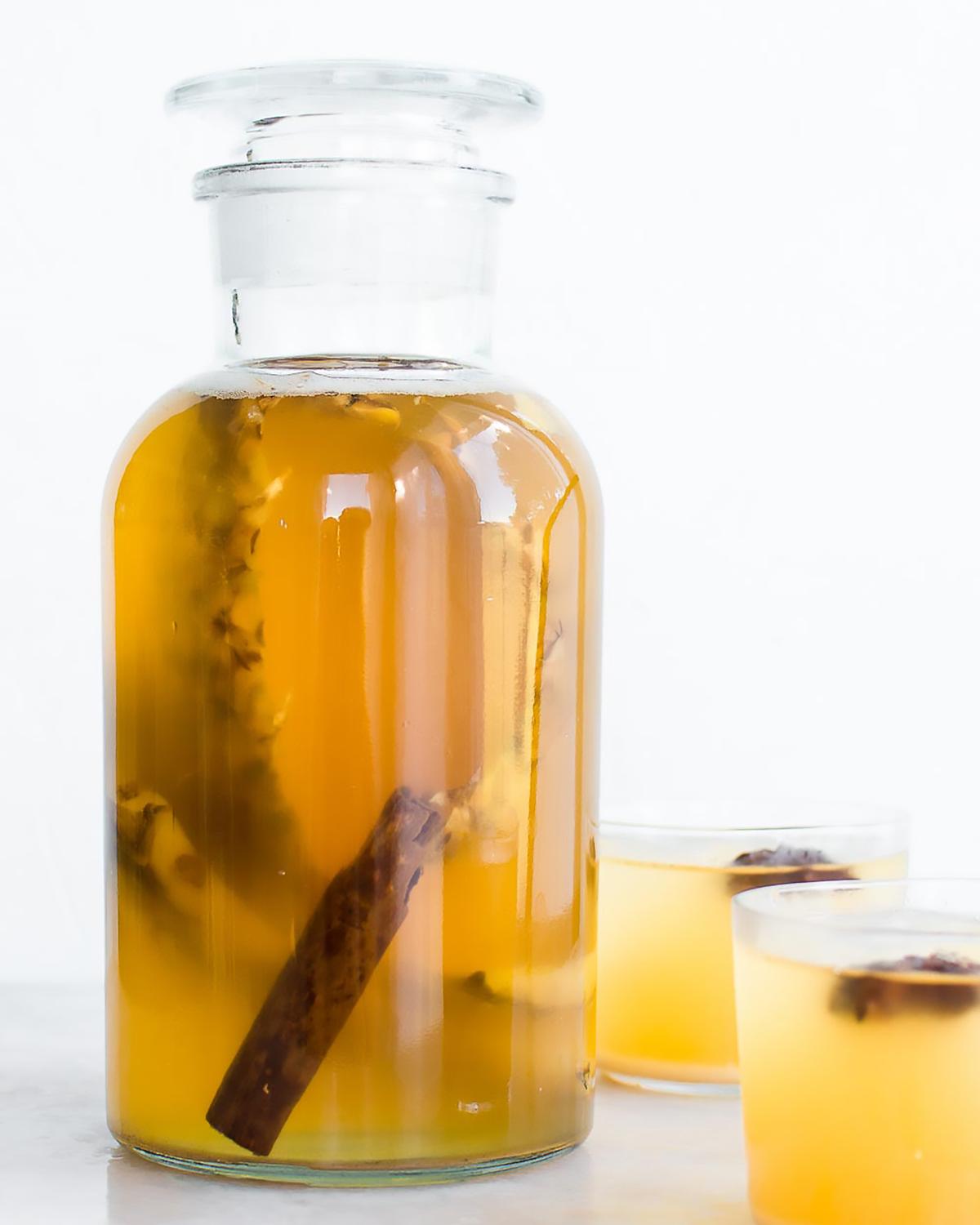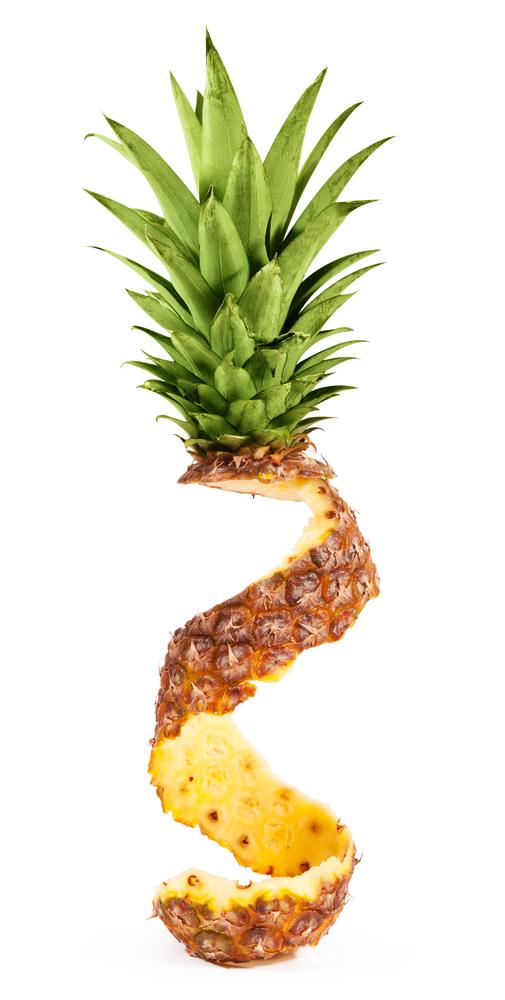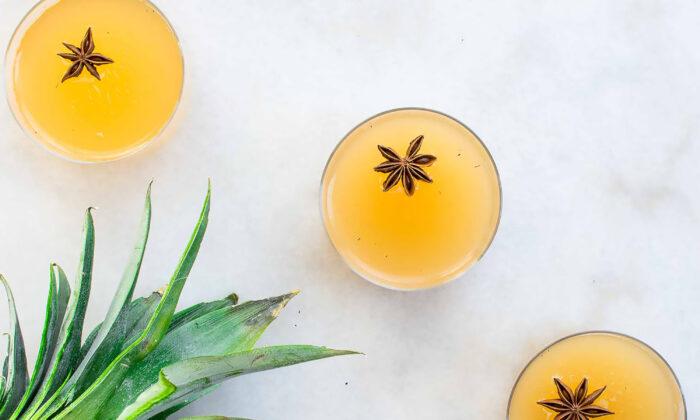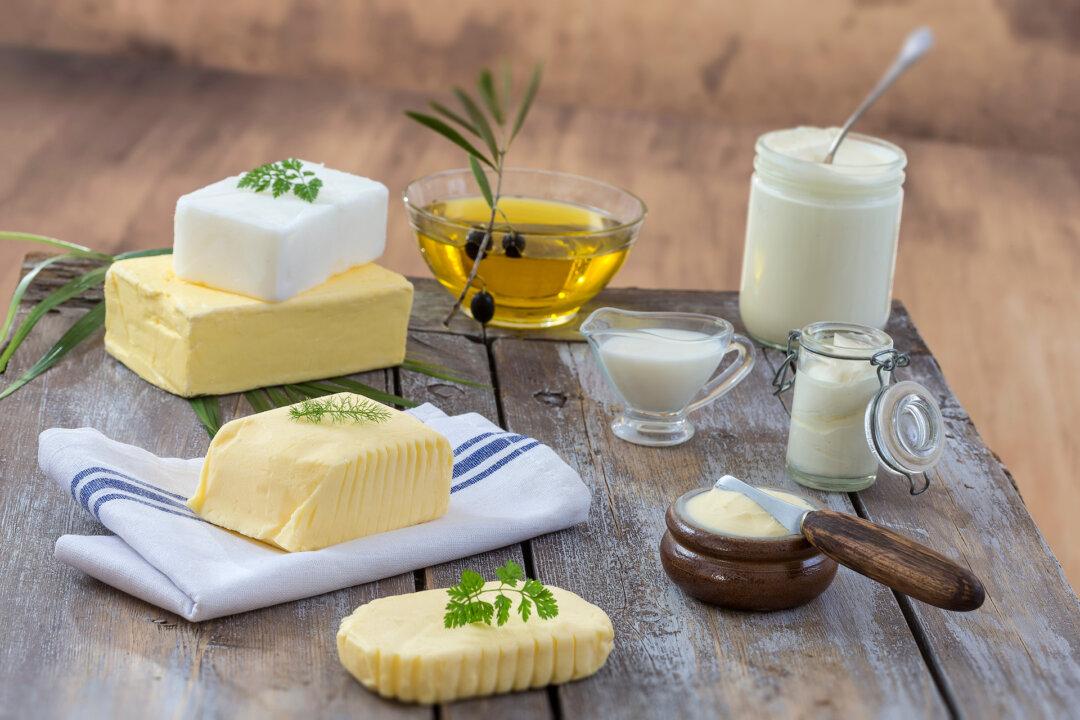One of the greatest gifts in cooking at home is the ability to make something from almost nothing. It’s an ingenious trick if you can manage it. In a well-managed kitchen, bacon drippings are saved, scraps become broth, and nothing goes to waste. This isn’t new; good cooks have always managed to conjure up healthy, nourishing food and drink from scraps and leftover bits.
One of the most delicious examples is tepache. Tepache is an ancient Mexican drink made by fermenting something that would likely go to waste otherwise: pineapple skins. Tucked into a jar of sugar-sweetened water, with a few spices added for good measure, the pineapple scraps ferment and create a sweet, tart brew with notes of cinnamon and spice. It’s delicious, especially when served over crushed ice, and makes a particularly nice drink during summer’s hottest months, when we can all use a little refreshment.

A Popular Drink With a Contentious History
The drink originates in pre-Colombian Mexico. It was traditionally made with corn, which was easy to access, and formed a foundational role in the diet of early Mexican peoples such as the Aztecs. Over the course of centuries, tropical fruits and sugar replaced corn in the recipe. An 1884 consular report to Congress described the brewing of this ancient drink and included versions made with dried plums, agave, bitter roots, and various tropical fruits.During the hot Mexican summers, tepache provided much-needed hydration. Not only did it quench thirst, but its added sugar and fruit provided a little bit of energy, too. While it was mostly used as a soft drink, it was also considered somewhat medicinal and held a reputation as a digestif. There’s fair reason to suggest that its reputation for supporting digestion holds merit.
As a lightly fermented drink, tepache belongs to the same class of beverages as kombucha, kvass, and traditionally brewed root beer. If you look at various culinary traditions throughout the world, you’ll find these sorts of sweet-sour drinks pop up with fair frequency. That’s because not only are they delicious, but they’re also easy to make at home with very little equipment and hardly any expense.
Increasingly popular in the United States, kombucha is a type of fermented tea with a flavor vaguely reminiscent of apple cider vinegar, and kvass is a traditional Eastern European drink made by fermenting scraps of toasted sourdough bread with honey. As a by-product of fermentation, tepache and similar drinks are also extraordinarily rich in beneficial bacteria. These are the same class of beneficial microorganisms that you find in other fermented foods such as yogurt and sauerkraut, and they help to support gut health, digestion, and immune system function. They also contain very small amounts of alcohol, typically 0.5 percent to 3 percent, depending on how long they ferment.
Despite its reputation as a digestive aid and the centuries-old tradition of brewing tepache, there were several attempts to quash its production in colonial Mexico. Brewing the drink often provided added income for indigenous women, who not only made the tepache for their families but also sold it to friends and neighbors. During the 18th century, Spanish rulers of Mexico restricted the brewing of tepache and other indigenous drinks to licensed tepacherias, scuttling a vibrant homebrewing industry that provided people, especially poor women, with much-needed income.
The move was two-fold. First, the ruling class attempted to curb public drunkenness (upwards of 45 percent of arrests in 18th-century Mexico City were drink-related). Second, it provided a way to regulate the production and sale of alcohol so that it could be more effectively taxed. Tepache, being only mildly alcoholic, was lumped in with stronger drink. The underground homebrewing industry undermined the Spanish authorities and represented a rebellious act of both self-determination and independence. The punishment was typically a fine, but could also include lashings. While the Catholic Church preached against the practice and the colonial authorities continued to raid homes, the practice of brewing tepache continued unabated, as it had for centuries before.

Ninell/Shutterstock
Bringing Tepache Home
Today, you can find tepache sold in Mexico along with street food and agua fresca. It’s a delicious, sometimes fizzy probiotic drink with a vibrant flavor. It’s also increasingly popular in the United States, with craft breweries beginning commercial production. De la Calle is one such brand, offering many varieties such as watermelon and prickly pear. But the drink is easy to make yourself with nothing but a big jar and a few ingredients.Tepache de Piña
Robust with the vibrant, sweet-tart flavor of pineapple and gently perfumed with cinnamon and star anise, tepache is a flavor-forward thirst-quenching drink. A short fermentation time of a few days gives it a light effervescence and dynamic flavor. Since tepache takes a few days to ferment, plan ahead.Pineapples are a pesticide-intensive crop, so take care to use organic pineapple in this recipe as it calls for the fruit’s skin. Using organic pineapple is also beneficial for local environments, as conventional pineapple production is highly destructive, often rendering fields sterile after years of use and negatively impacting biodiversity.
- 4 ounces unrefined cane sugar
- 8 cups water, divided
- Peel of 1 large organic pineapple
- 1 medium Ceylon cinnamon stick
- 4 star anise pods
While the sugar water cools, cut away the pineapple’s top and bottom and discard them. Cut off long strips of the peel, reserving the fruit for another purpose. Chop the peel and place into a 1-gallon jar with a lid. Add the cinnamon stick and clove.
Pour the sugar water over the pineapple, and then pour in the remaining 6 cups of water. Cover the jar, and allow the tepache to ferment for 2 to 3 days, or until bubbles and foam form at the surface of the jar. Strain away the pineapple and spices, and then pour the tepache into bottles.
You can drink the tepache right away, or allow it to ferment in the bottle for an additional 1 to 2 days, which will make it become fizzy. Serve over ice.





